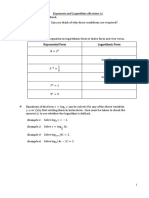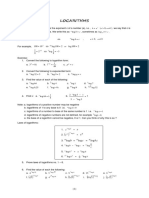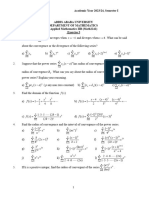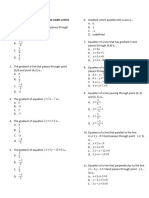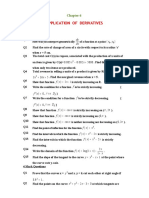0% found this document useful (0 votes)
47 views2 pagesExponentials and Logarithms
The document covers the laws of exponents and logarithms, including index laws for multiplication, division, and raising powers. It explains logarithms as the power to which a base must be raised to yield a number, along with log laws and examples of simplifications. Additionally, it includes practice questions and examples related to exponential growth and solving logarithmic equations.
Uploaded by
wexogix874Copyright
© © All Rights Reserved
We take content rights seriously. If you suspect this is your content, claim it here.
Available Formats
Download as PDF, TXT or read online on Scribd
0% found this document useful (0 votes)
47 views2 pagesExponentials and Logarithms
The document covers the laws of exponents and logarithms, including index laws for multiplication, division, and raising powers. It explains logarithms as the power to which a base must be raised to yield a number, along with log laws and examples of simplifications. Additionally, it includes practice questions and examples related to exponential growth and solving logarithmic equations.
Uploaded by
wexogix874Copyright
© © All Rights Reserved
We take content rights seriously. If you suspect this is your content, claim it here.
Available Formats
Download as PDF, TXT or read online on Scribd
/ 2








